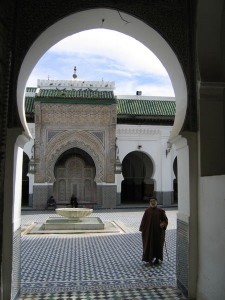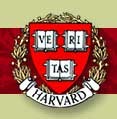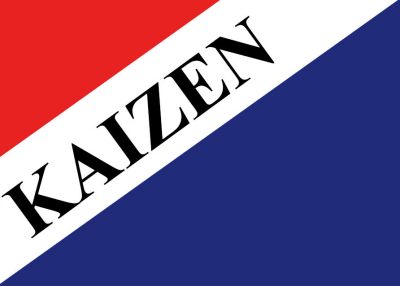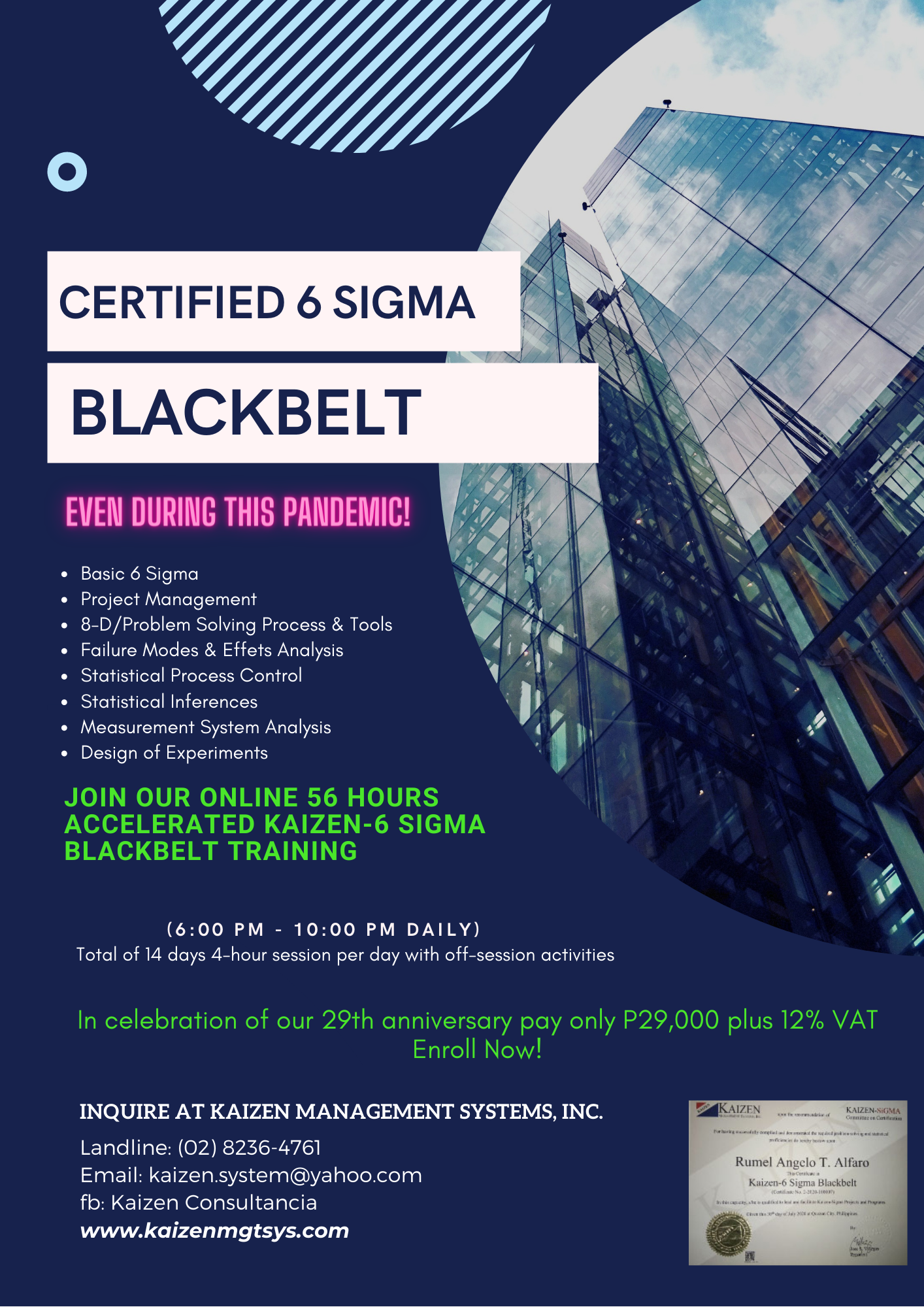By Jose S. Villegas
It is not customary for people to think of companies as something that will last for tens of hundreds of years. Founders of companies will probably have thought their creations would outlive them by two or three lifetimes. But corporations, although manmade, have a potential to be immortal. Oftentimes, corporations don’t live long. Very few live to celebrate their 5th anniversary. Its life is subject to a lot of uncertainties and it can get extinct for a host of reasons.
Would it be nice to see a business corporation lasting for a thousand years? How can a company live a long, profitable life? What can corporations learn from organizations and institutions that are so ancient and yet still existing today? How would our view of business and management change if we see companies as immortal entities? How would this affect management’s outlook in business? How would this challenge our current way of doing business? These questions are intriguingly relevant, especially for us, as we are celebrating our 15th anniversary. So we thought of checking the history for oldest companies, organizations and institutions to see what can be learned from them.
Oldest Family Businesses
From Centuries of Success by William O’Hara, Peter Mandel, and John Gunasti, the ten (10) oldest existing companies (started as a family business) in the world are:
| Company | Business | Year Founded | Country |
| 1. Kongo Gumi | Construction | 578 | Japan |
| 2. Hoshi Ryokan | Innkeeping | 718 | Japan |
| 3. Château de Goulaine | Vineyard, museum, haute | 1000 | France |
| 4. Fonderia Pontificia Marinelli | Bell foundry | 1000 | Italy |
| 5. Barone Ricasoli | Wine and olive oil | 1141 | Italy |
| 6. Barovier & Toso | Glass making | 1295 | Italy |
| 7. Hotel Pilgrim Haus | Innkeeping | 1304 | Germany |
| 8. Richard de Bas | Paper | 1326 | France |
| 9. Torrini Firenze | Goldsmiths | 1369 | Italy |
| 10. Antinori | Wine | 1385 | Italy |
Oldest in United Kingdom is a company that is into woolens (woolen products), John Brooke & Sons, founded in 1541 at Huddersfield. Codorniu, a wine-maker founded in 1551, is the most ancient in Spain. Another wine-maker, Fonjallaz (1552), is the oldest in Switzerland. A company called Hacienda Los Lingues, founded in 1575, a ranch in Chile. The oldest existing company in the US is Zildjian Cymbal (1623) of Norwell, Massachusetts. Sweden’s oldest existing company is a hotel named Akerblads circa 1630. The book noted that these companies started out as family businesses although many of them are now corporations. It is so interesting to note that the famous Kikkoman, the maker of the world famous Kikkoman soy sauce, was established in the same year (1630) that Sumitomo Corporation came into being.
Oldest Bank
Italians not only invented banking in the 14th century Florence, but today Italy is home to the world’s oldest bank, on its way to becoming a key player in the international banking business.
Banca Monte dei Paschi di Siena SPA (MPS) is the oldest surviving bank in the world. Founded in 1472 as a pawnshop by the magistrate of the city state of Siena, Italy, the original mission was to help the poor in the Tuscan city of Siena. Today it consists of approximately 1,800 branches, 28,000 employees and 4.5 million customers in Italy, as well as branches and businesses abroad. Its headquarters in the Palazzo Salimbeni in Siena are host to a magnificent art collection and a large number of priceless historical documents spanning the centuries of its existence. However, this collection is not usually open to the public.
Monarchies
The Japanese Imperial Family
The Japanese imperial family is the world’s oldest hereditary monarchy. The family dates in lineage back to Emperor Jimmu. The title of Tenno (emperor) or Sumera-Mikoto (heavenly sovereign) was assumed by rulers in the sixth or seventh century BC. Emperors were, and are known by the name, or names of their reigns. The current reigning Emperor, Akihito is number 125 in the unbroken chain of succession.
According to the historical chronicles of ancient Japan, the Kojiki (Record of Ancient Matters, AD 712) and the Nihon Shoki (Chronicle of Japan, AD 720), the sun goddess Amaterasu Omikami presented the sanshu no jingi or Imperial regalia to her grandson, Ninigi no Mikoto. He in turn passed them on to his descendants, the emperors, the first of whom was Emperor Jimmu (traditionally dated to February 11, 660 BC). The regalia, a mirror, a sword and a curved jewel are symbols of the legitimacy and authority of the emperor. These also form the foundations of the indigenous Shinto faith. Since the foundation of Japan in about 600 BC, the Imperial Household of Japan (Koshitsu) has kept the unbroken line of the Family and Emperors as the only dynasty in Japan for over 2600 years.
The family crest is the kiku, or chrysanthemum, giving rise to the term chrysanthemum throne. The role of the Emperor has varied in importance in Japanese society. Some emperors have been absolute rulers. Others have been mere figureheads to powerful shoguns. It was the Meiji restoration, where the ruling emperor was restored that began the building of modern Japan. The emperor’s role changed again after Japan’s defeat in World War II. Emperor Hirohito had been considered a divine being, which seemed to be what Japanese people regard the emperor for more than two thousand years. Japan’s new Constitution made him the “symbol of the state”, but no longer a divine ruler. The emperor now plays a largely ceremonial role as a constitutional monarch. There have been eight empresses in Japan’s long history, but the 1946 law on the monarchy bars female succession.
The British Monarchy
The crown of England is the oldest surviving political institution in Europe. In Britain itself, the relationship between monarchy and people created the English national identity and shaped Scotland and Wales. The nation we now call England was not always a single entity, but evolved from the shattering of the Roman province of Britannia. The British crown has ruled in a steady line broken only by the Norman conquest, Cromwell’s Commonwealth, and the Glorious Revolution.
The British monarch or Sovereign is the head of state of the United Kingdom, the British overseas territories and the Commonwealth. England is a Constitutional Monarchy which is headed by Queen Elizabeth II, who has reigned since February 6, 1952. The heir apparent is her eldest son, Prince Charles, Prince of Wales and Duke of Rothesay. The Prince of Wales undertakes various public ceremonial functions, as does the queen’s husband, Prince Philip, Duke of Edinburgh. There are several other members of Royal Family besides those aforementioned including the Queen’s other children, grandchildren and cousins.
The Monarchy is the oldest institution of government, dating back to the Dark Ages. It traces its roots to Egbert, the first known king, way back in 802 AD when, the Saxon Danes ruled England. Egbert was forced into exile at the court of Charlemagne, by the powerful Offa, King of Mercia. He returned to England in 802 and was recognized as king of Wessex. He defeated the rival Mercians at the battle of Ellendun in 825. In 829, the Northumbrians accepted his overlordship and he was proclaimed “Bretwalda” or sole ruler of Britain.
After Egbert, 14 other Wessex kings ruled in succession. This included Alfred the Great who is considered by other authorities as the first king of all England and whose son Edward the Elder and grandson Athelstan – together ruled for 40 years from 899 – expanded the territory of Wessex. In 927, Athelstan claimed rule over all of what is now England by driving the Viking leader Guthfrith from York in Northumbria. On charters and coins, Athelstan was acclaimed as ‘King of all Britain’. However, it was not until the reign of Eadred (ruled 946-55) that the Northumbrians finally capitulated.
The eleventh century saw a more stable England, despite a number of wars with the Danes which resulted in a Danish monarchy for some years. When William, Duke of Normandy conquered England in 1066 he became monarch of a kingdom with probably the strongest royal authority in Europe. The Norman Conquest was crucial in British history, in terms of both political and social change. It continued the centralization of power begun in the Anglo-Saxon period, while the feudal system also continued to develop.
It was in 1603 when James VI of Scotts acceded to the throne of England that the English and Scotts crowns were united under one monarch. The kingdoms were joined in the Acts of Union in 1707, to form Great Britain. Throughout England’s long history as a nation, its kings and queens have been widely known and loved.
The Roman Catholic Church
The Roman Catholic Church is the most ancient existing religious institution (corporation). There are older religions still existing but there is none like the Roman Catholic Church that was able to maintain continuous succession of leaders and was able to keep a personality of being one single corporate body throughout ages.
Roman Catholic Church, the largest single Christian body, composed of those Christians who acknowledge the supreme authority of the bishop of Rome, the pope, in matters of faith. The word catholic (Greek katholikos) means “universal” and has been used to designate the church since its earliest period, when it was the only Christian church.
The Roman Catholic Church regards itself as the only legitimate inheritor, by an unbroken succession of bishops descending from Saint Peter to the present time, of the commission and powers conferred by Jesus Christ on the 12 apostles. By tradition the Church started on the Pentecost of 29 AD. The church has had a profound influence on the development of European culture and on the introduction of European values into other civilizations. Today there are more than 1 billion people who are Roman Catholics.
Organization. In keeping with early Christian traditions, the fundamental unit of organization in the Roman Catholic Church is the diocese, headed by a bishop. The church comprises nearly 2,000 dioceses and 561 archdioceses, which are more distinguished sees (areas of jurisdiction) that have certain responsibilities for governance in the dioceses attached to them. The major church in a diocese is the cathedral, where the bishop presides at worship and other ceremonies. The cathedral contains the bishop’s “throne” or “chair” (Latin cathedra), from which in the early church he preached to his congregation.
The Pope. At the head of the Roman Catholic Church is the pope, who is the bishop of Rome. He has final authority in all matters. The pope appoints bishops to dioceses and transfers them to others. By classification, the pope is an elected monarch like in any other monarchies in the world.
The Archbishop and Bishop. The bishop is the chief liturgical figure in the diocese and is distinguished from the priest principally by the power to confer holy orders and to act as the usual minister of confirmation. The bishop has the highest jurisdictional powers within the diocese. He has the right to admit priests to his diocese and to exclude them from the practice of ministry within it, and he assigns priests of his diocese to parishes and other duties.
The Clergy. Directly under the bishop are the clergy, both secular and religious. Secular clergy are not members of religious orders or congregations and have permanently been incorporated (incardinated) into the diocese under the authority of the local bishop. Secular clergy generally staff the parishes of the diocese and serve as pastors in them. The religious clergy, on the other hand, are primarily committed to their orders or congregations, which transcend diocesan boundaries. While working within a given diocese, these clergy must adhere to the bishop’s decisions in matters of public worship but otherwise enjoy considerable discretion in their ministry.
The Nicene Creed. The Nicene Creed of 325 AD adopted by the First Council of Nicaea is the embodiment of belief of the Roman Catholic Church. It says:
We believe in one God, the Father Almighty, Maker of all things visible and invisible.
And in one Lord Jesus Christ, the Son of God, begotten of the Father, the only-begotten; that is, of the essence of the Father, God of God, Light of Light, very God of very God, begotten, not made, being of one substance with the Father;
by whom all things were made both in heaven and on earth;
who for us men, and for our salvation, came down and was incarnate and was made man;
he suffered, and the third day he rose again, ascended into heaven;
from thence he shall come to judge the quick and the dead
And in the Holy Ghost.
But those who say: ‘There was a time when he was not;’ and ‘He was not before he was made;’ and ‘He was made out of nothing,’ or ‘He is of another substance’ or ‘essence,’ or ‘The Son of God is created,’ or ‘changeable,’ or ‘alterable’ — they are condemned by the Holy Catholic and Apostolic Church.
Oldest Universities
A university is an institution of higher education and research, which grants academic degrees at all levels (bachelor, master, and doctorate) in a variety of subjects. A university provides both tertiary and quaternary education. The word university is derived from the Latin universitas, meaning corporation, since the first medieval European universities were simply groups of scholars.
Nanjing University
The oldest university in China is Nanjing (Nanking) University founded in 470 AD. Its predecessor was the Imperial Central Academy which was originally founded in the first year of Yong’an reign (258 AD). Nanjing University was also believed to evolve from Shangyang, founded by Shun in Youyu era before 21st century BC. Nanjing University became a comprehensive institution combining higher education and research and consisted of five divisions: Literature, History, Confucianism, Dao Study and Yin Yang Study, and it was the first research educational institution in history. In the period the faculty members included such scholars and scientists as Zu Chongzhi, Ge Hong, Wang Xizhi. In the 15th century during the Ming Dynasty, Nanjing University was the world’s largest higher education institution, with about 10 thousand students, many of whom came from a number of other countries. Wu Cheng’en, Zheng He and Zheng Chenggong studied there around the time. Nanjing University was refounded in 1915 with the name Nanjing Higher Normal Institute on the site of former Nanjing (Imperial) University. Its motto is: Sincerity, Austerity, Majesty, Greatness, Endeavor to Learn and Urge to Action.
The University of Al-Karaouine
 The University of Al-Karaouine or Al-Qarawiyin is a university located in Fes, Morocco. Founded in 859 AD, the university is one of the leading spiritual and educational centers of the Muslim world and the oldest continuously operating institution of higher learning in the world. It is considered the “oldest existing educational institution in the world” by Guinness Book of World Records.
The University of Al-Karaouine or Al-Qarawiyin is a university located in Fes, Morocco. Founded in 859 AD, the university is one of the leading spiritual and educational centers of the Muslim world and the oldest continuously operating institution of higher learning in the world. It is considered the “oldest existing educational institution in the world” by Guinness Book of World Records.
The university has produced numerous scholars who have strongly influenced the intellectual and academic history of the Muslim world. Among these are Abu Abdullah Al-Sati, Abu Al-Abbas al-Zwawi, Ibn Rashid Al-Sabti, Ibn Al-Haj Al-Fasi, Abu Madhab Al-Fasi, a leading theorist of the Maliki school of Islamic jurisprudence and Leo Africanus a renowned traveler and writer.
Al-Karaouine University played a leading role in cultural and academic relations between the Islamic world and Europe in the middle ages. The greatest non-Muslim alumnus of the university was the Jewish philosopher and theologian Maimonides (1135-1204), who studied under Abdul Arab Ibn Muwashah. The cartographer Mohammed al-Idrisi, whose maps aided European exploration in the Renaissance is said to have lived in Fes for some time, suggesting that he may have worked or studied at Al-Karaouine.
The University of Al-Karaouine was founded by Fatima Al-Fihri, the daughter of a wealthy merchant named Mohammed Al-Fihri. The Al-Fihri family had migrated from Kairouan (hence the name of the university), Tunisia to Fes in the early 9th century, joining a community of other migrants from Kairouan who had settled in a western district of the city. Fatima and her sister Mariam, both of whom were well educated, inherited a large amount of money from their father. Fatima vowed to spend her entire inheritance on the construction of a mosque suitable for her community. This remarkable story is a typical example shedding some light on the role and contribution of women in Muslim civilization. Such a role is the subject of widely held misconceptions about Islam.
Harvard University
 Harvard University, at 371 years old, holds two records, one as the oldest institution of higher learning in the United States and the other is as the oldest corporation in the Western Hemisphere (this is of course subject to contention). Founded 16 years after the arrival of the Pilgrims at Plymouth, the Harvard College was established in 1636 by vote of the Great and General Court of the Massachusetts Bay Colony and was named for its first benefactor, John Harvard of Charlestown, a young minister who, upon his death in 1638, left his library and half his estate to the new institution.
Harvard University, at 371 years old, holds two records, one as the oldest institution of higher learning in the United States and the other is as the oldest corporation in the Western Hemisphere (this is of course subject to contention). Founded 16 years after the arrival of the Pilgrims at Plymouth, the Harvard College was established in 1636 by vote of the Great and General Court of the Massachusetts Bay Colony and was named for its first benefactor, John Harvard of Charlestown, a young minister who, upon his death in 1638, left his library and half his estate to the new institution.
On June 9, 1650, the Great and General Court of Massachusetts approved Harvard President Henry Dunster’s charter of incorporation. The Charter of 1650 established the President and Fellows (a seven-member board) of Harvard College also known as the Harvard Corporation. According to its charter, Harvard strives to create knowledge, to open the minds of students to that knowledge, and to enable students to take best advantage of their educational opportunities.
During its early years, the College offered a classic academic course based on the English university model but consistent with the prevailing Puritan philosophy of the first colonists. Although many of its early graduates became ministers in Puritan congregations throughout New England, the College was never formally affiliated with a specific religious denomination. An early brochure, published in 1643, justified the College’s existence: “To advance Learning and perpetuate it to Posterity; dreading to leave an illiterate Ministry to the Churches.”
The University has grown from nine students with a single master to an enrollment of more than 18,000 degree candidates, including undergraduates and students in 10 principal academic units. An additional 13,000 students are enrolled in one or more courses in the Harvard Extension School. Over 14,000 people work at Harvard, including more than 2,000 faculties. There are also 7,000 faculty appointments in affiliated teaching hospitals.
Seven presidents of the United States – John Adams, John Quincy Adams, Theodore and Franklin Delano Roosevelt, Rutherford B. Hayes, John Fitzgerald Kennedy and George W. Bush – were graduates of Harvard. Its faculty has produced more than 40 Nobel laureates.
On September 8, 1836, at Harvard’s Bicentennial celebration, it was announced that President Josiah Quincy had found the first rough sketch of the College arms – a shield with the Latin motto “VERITAS” (“Verity” or “Truth”) on three books – while researching his History of Harvard University in the College Archives. During the Bicentennial, a white banner atop a large tent in the Yard publicly displayed this design for the first time. Until Quincy’s discovery, the hand-drawn sketch (from records of an Overseers meeting on January 6, 1644) had been filed away and forgotten. It became the basis of the seal officially adopted by the Corporation in 1843 and still informs the version used today.
As for its mission, Harvard strives to create knowledge, to open the minds of students to that knowledge, and to enable students to take best advantage of their educational opportunities. To these ends, it encourages students to respect ideas and their free expression, and to rejoice in discovery and in critical thought; to pursue excellence in a spirit of productive cooperation; and to assume responsibility for the consequences of personal actions. It seeks to identify and to remove restraints on students’ full participation, so that individuals may explore their capabilities and interests and may develop their full intellectual and human potential.
Remarkable Corporations
The British East India Company
Much has been heard about the British East India Company. Have you ever wondered if this stupendous, powerful company still exists? Here’s what we found: The British East India Company was established in December 31, 1600 under the name Honourable East India Company. It was the first Joint Stock Company* in England and was granted an English Royal Charter by Elizabeth I effectively giving the company a 21-year monopoly on all trade in the East Indies (India and other territories in the region). The company transformed from a commercial trading venture to one that virtually ruled India as it acquired auxiliary governmental and military functions. It was involved in the trade of cotton, silk, indigo dye, saltpeter and tea. It also had interests along the routes to India from Great Britain. As early as 1620, the company attempted to lay claim to the Table Mountain region in South Africa, later it occupied and ruled St. Helena. The British East India Company established Hong Kong and Singapore; employed Captain Kidd to combat piracy. Other notable events in the Company’s history were that it held Napoleon captive on St. Helena. Its products were the basis of the Boston Tea Party in colonial America.
_______________
*A joint stock company (JSC) is a type of business partnership in which the capital is formed by the individual contributions of a group of shareholders. Certificates of ownership or stocks are issued by the company in return for each contribution, and the shareholders are free to transfer their ownership interest at any time by selling their stockholding to others.
In 1761, an officer of the British East India Company at Madras (India), Alexander Dalrymple, concluded an agreement with the Sultan of Sulu that allowed the company to set up a trading post in the North Borneo region (Sabah). Sabah later became the source of irritation in the relation between Philippines and Malaysia who both laid claim on the territory.
The efforts of the company in administering India emerged as a model for the civil service system in Britain, especially during the 19th century. Deprived of its trade monopoly in 1813, the company wound up as a trading enterprise. In 1858, the Company lost its administrative functions to the British government following the 1857 uprising which began with what the Company’s Indian soldiers called the Sepoy Mutiny, Indian Rebellion of 1857 or War of Independence of 1857. India then became a formal crown colony. In the early 1860s, all of the Company’s Indian possessions – including its armed forces – were taken over by the Crown. When the East India Stock Dividend Redemption Act came into effect, the Company was dissolved on January 1, 1874 exactly 273 years after its foundation. The Times reported, “It accomplished a work such as in the whole history of the human race no other company ever attempted and as such is ever likely to attempt in the years to come.”
Sumitomo Corporation
The history of Sumitomo dates back to Masatomo Sumitomo (1585 – 1652), who opened a book and medicine shop in Kyoto in the 17th century. Sumitomo expanded his business to include copper smelting when his daughter married the eldest son of Riemon Soga. Soga had developed, with considerable effort, a copper smelting technology called “Nanban-buki” (western refining) to extract silver from crude copper.
During the Edo period, Japan was one of the world’s leading copper producing countries. By this time Sumitomo was in copper, textiles, sugar and medicines trade. After obtaining permission from the Tokugawa Shogunate it operated the Besshi Copper Mine for 283 years that served as a basis of Sumitomo business. After the Meiji Restoration, Japan opened up to the West allowing the Besshi Copper Mine to adopt technology and equipment from overseas, and dramatically increased its production output.
With the postwar dissolution of financial groups, Sumitomo affiliated companies began to go their separate ways, and each company now plays an active part in their respective industry. The “Founder’s Precepts” written by Masatomo Sumitomo still live on in the performance of Sumitomo affiliated companies as the “basis of the Sumitomo company spirit.” Sumitomo Group’s current core consists of 20 companies focusing on banking, shipbuilding, mining, glass production, electronics, cement, lumber and chemicals.
Oldest in the Philippines
Ayala Corporation
Ayala Corp., one of the largest conglomerates in the country, is also the oldest existing company around. It was established in 1834 by sugar barons Domingo Roxas and Antonio de Ayala. It was later renamed as Casa Ayala, then as Ayala y Compania and recently as Ayala Corporation. Today, the company has a portfolio of diverse business interests including investments in real estate, banking, telecommunications, electronics, information technology, water infrastructure and management and business process outsourcing. In the late 1800s, Ayala participated in the construction of the Colgante and the Ayala bridges and in 1888, it introduced the first tramcar service in the Philippines and was mainly responsible for the development of Makati as the country’s financial center.
Bank of the Philippine Islands
The oldest existing bank in the Philippines is the Bank of the Philippine Islands (BPI) was established by Domingo Roxas, an ancestor of the Ayala family, on August 1, 1851 as the Banco Español-Filipino de Isabel II (Spanish-Filipino Bank of Isabel II). It was named after the queen of Spain, Isabella II, the daughter of former king Ferdinand VII. The Banco Español-Filipino was the second Philippine bank. The first one established by Francisco Rodriguez in 1830 no longer exists. On the same year that it was established, Banco Español-Filipino was given the power to print the Philippine peso by a royal decree. Before 1851, the Philippine Islands use a lot of different currencies most popular was the Mexican peso.
University of San Carlos
The University of San Carlos (USC) in Cebu City is the oldest school in the Philippines and Southeast Asia. Had it not for Nanjing University, the University of San Carlos may have been the oldest existing university in Asia. It is a Catholic institution of higher learning run by the Society of the Divine Word. It consists of four campuses located in different areas of metropolitan Cebu – the main campus along P. del Rosario St., the Talamban campus, the north campus, and the south campus.
The university traces its origins to the founding of the school Colegio de San Ildefonso, founded in 1595. Colegio de San Ildefonso was founded by the Spanish Jesuits fathers Antonio Sedeno, Pedro Chirino and Antonio Pereira on August 1, 1595. It was closed in 1769 at the expulsion of the Jesuits. In 1783, the initiative of the Bishop Mateo Joaquin de Arevalo opened the Colegio-Seminario de San Carlos. In 1852, the management of the college was entrusted to the Dominican fathers, replaced in 1867 by the Vincentian Fathers then, in 1935, the Societas Verbi Divini or the Society of the Divine Word (SVD). The Second World War led to the interruption of the courses in 1941 because several buildings suffered various destruction. The reopening of various faculties spread out between 1945 and 1946. The college of San Carlos was granted its university charter in 1948.
University of Santo Tomas
The University of Santo Tomas lays claim as the oldest university in Asia as it had attained university status (1645) much earlier than the University of San Carlos. It also has a reputation of being the largest Catholic university (in terms of student population) in the world located in one campus. It was founded on April 28, 1611 by the third Archbishop of Manila, Msgr. Miguel de Benavides, O.P., together with Frs. Domingo de Nieva and Bernardo de Santa Catalina. It was originally conceived as a school to prepare young men for the priesthood. Located within Intramuros, the Walled City, it was first called Colegio de Nuestra Señora del Santisimo Rosario and later renamed Colegio de Santo Tomas in memory of the foremost Dominican Theologian, Saint Thomas Aquinas.
In 1624, the Colegio was authorized to confer academic degrees in Theology, Philosophy and Arts. On November 20, 1645 Pope Innocent X elevated the College to the rank of a university and in 1680, it was subsequently placed under royal patronage. In 1785, for the exceptional loyalty shown by the administration and students who volunteered to defend Manila against the British invasion, King Charles III granted it the title of “Royal University”.
Pope Leo XIII made the University of Santo Tomas a “Pontifical University” on September 17, 1902 and in 1974, Pope Pius XII bestowed upon it the title of “The Catholic University of the Philippines”. In 1927, with the continuing increase in enrollment, the University moved from Intramuros to its present site which covers an area of 21.5 hectares in the district of Sampaloc .
Since its foundation, the University’s academic life has been interrupted only twice: 1898 to 1899, during the Philippine revolution against Spain; and 1942 to 1945, during the Japanese occupation of Manila, when the University of Santo Tomas was transformed by the Japanese Forces into a concentration camp.
In recognition of the noble achievements of this institution, a number of important dignitaries have officially visited the University, among them, during the last three decades: His Holiness Pope Paul VI on November 28, 1970; His Royal Highness, Prince Juan Carlos, now King Juan Carlos I of Spain in 1974 and 1995; Mother Teresa of Calcutta in January 1977 and again in November 1984; Pope John Paul II on February 18, 1981 and January 13, 1995; President Eduardo Frei of Chile on November 21, 1995; and President Jose Maria Aznar of Spain on July 1, 2000.
Oldest City
A city as early as 9000 BCE, experts believe that Jericho (in Palestine) is the oldest continuously inhabited city in the world. Although Jericho holds the record of being the oldest city in the world, nothing can compare to Rome. La Città Eterna – the Eternal City – has been around for over 3,000 years.
From her beginning as a tiny village in central Italy, to her current status as a top ranking city for the arts, fashion and cuisine, Rome has seen it all. The city of Rome lies between the hills and the sea, and encompasses approximately 1,100 square kilometers (420 sq. miles). It was originally built on the famous “seven hills” that still form part of the city. According to legend, Rome was founded in 753 BC by Romulus, who—along with his twin brother Remus—was a son of Mars. After the young boys had been abandoned on the Palatine Hill, they were suckled by a she-wolf. Romulus, thereafter, founded Rome atop the Palatine Hill, naming it after himself.
Today, the she-wolf remains the symbol of Rome. History’s version of this delightful tale is that the hilly regions around the Tiber were inhabited by various hill tribes as early as the 8th century B.C. These hill dwellers were gradually dominated by the Etruscans, who built the settlement that would one day be Rome. Frustrated with the Estruscans’ dominance over their affairs, in 510 BC, the Romans rose up and overcame their oppressors to establish a republic. Through the centuries that followed, Rome rose as a mighty empire, declined as famine and plague set in, made it through the Dark Ages and the Renaissance, fought through foreign domination and made her way to the 21st century, stronger and more beautiful for all her experiences.
No city in the world reflects the history of man’s endeavors quite as much as Rome. From her ancient ruins dating back to Imperial times, to her modern day galleries and shopping areas, everywhere there is evidence of timelessness. Imperial, Classical, Renaissance, Baroque, Modern: all these periods are represented in her art and architecture. As the Romans so aptly put it: You could spend an entire lifetime in the eternal city and still not experience it all. It is hard to stand anywhere in Rome and not be taken aback by the magnitude of her history. The entire city comprises an immense open-air museum, layered in nearly three millennia. As an entire lifetime is not enough, also words can hardly help presenting Rome.
Characteristics of Ancient Companies and Institutions
Just what are the characters of companies and institutions that allowed them fantastic longevity? Below are some of the observed distinguishing traits and characteristics that set ancient companies apart from ordinary ones. (We don’t claim that all of them had all of it.)
- Leaders were homegrown. Leaders, especially the presidents or chairmen, were promoted from within the company. Being homegrown, these leaders were acculturated in the company values, beliefs and practices (culture). Most ancient companies started out as family businesses which means that management of the business was passed on from parents to children. Kongo Gumi, the oldest recorded business company was founded in 578. The company was in the construction business involved in building temples and castles for almost one and a half millennia. The current president, Toshitaka Kongo is the 40th generation from its founder Shigemitsu Kongo. His son 54-year old Mazakasu Kongo is due to replace him when he retires. Fonderia Pontificia Marinelli, a company founded in 1000 AD that makes bells (church bells), has always been run by the Marinelli family. The Imperial Household of Japan has kept the unbroken line of the Family and Emperors for over 2600 years. In all monarchies, kings were born and trained to be kings. In the Roman Catholic Church, a priest must have had at least 10 years of education and training in doctrine and ministry. Aside from Peter, no pope had come from another religion. Popes rose from the ranks within the hierarchy. And locally, the management company of Ayala Group, the Ayala Corporation has always been led by a family member.
- There is a clear order or system of succession. Usually, it is the eldest son who succeeds the president or the company head. In some cases, it is the most able son or one who exhibited most concern for the company. It is not unusual that women took the leadership when no men were there to lead. This was observed not only in monarchies but also in companies. Characteristic of the hereditary monarchies, England and Japan in particular, is a definitive succession rule beginning from the eldest son of the sovereign. Even as a child one would know that he will be king someday. It has been a tradition of the Roman Catholics to elect a pope from among the Cardinals
- Commitment to build a product that lasts or service quality that lingered in the minds of customers. Kongo Gumi’s secret for long corporate life? Deliver lasting products and stand by them. “At Shitennoji (temple),” Mazakasu Kongo explains, “someone from our company is there every day. Unlike other construction companies, we handle the maintenance of our buildings. Our wooden structures are built to last a thousand years, and we are responsible until the end.” In the era of the one-year warranty, that’s an unbeatable promise.
- Policies and practices that are consistent with corporate longevity. It will be grossly unfair to say that ancient companies attained longevity by chance. (We believe that if a company were to exist for eons, the founders or the present leaders must have a deliberate plan that will go a long way to ensure long, prosperous life.) The Roman Catholic Church did not state it intended to live for thousands of years. But her belief provided that she will live to see the second coming of the Lord Jesus Christ. And the Church has been waiting for a couple of thousands of years and still waiting. Meanwhile, the Church continues to help in preserving the good moral traditions taught by the Apostles and consistent with the Ten Commandments. The Catholics have been known for their loyalty to the Church and obedience to the pope. The English Kings and Queens have been known to be benevolent to their subjects, making themselves loved and patronized by their people, ensuring the continued existence of the British Crown. Having enriched the society where they belong, by providing knowledge and education to their constituents, it was easy and natural for universities to have established a good reputation with the powers that be and the general public. Throughout history, churches, temples and schools have been refuge of people when there were injustice, persecutions and hardships. These probably were the reasons why universities and churches have been some of the longest living corporations. The core values (or business spirit) of Sumitomo Corporation provides compliance with the society’s rules and regulations while maintaining highest ethical standards through sound management. It provides further that under no circumstances it will pursue easy gains or act imprudently.
- Ability to adapt to changing times. Over a thousand-year period, even the culture of a nation can change. The Filipino culture, for example has changed radically in just a period of 100 years. The British Royal family and other ancient monarchies of the world have adapted to the requirements of changing times. Many relinquished absolute monarchy in favor of the more suitable constitutional monarchy. One of the most dramatic transformations in the monarchy was when Emperor Hirohito, considered a divine ruler, announced to the Japanese people that he is human and not divine. Today, the Emperor is the symbol of the state and the unity of the Japanese people. Universities were easier to adapt being the cradle of new ideas and knowledge. Many ancient companies are still in their original business but have adapted new technologies like Fonderia Pontifica Marinelli, bell makers since 1000 AD. Borovier & Toso, glass making since 1295, is among those who were able to maintain original business but expanded in the same line. Others have expanded and diversified to other businesses like Sumitomo Corporation, established as a book and medicine shop in 1630. Now Sumitomo is one of the world’s largest and most diversified conglomerates. Some have changed business totally. A classic example is Nokia Corporation which was not always been in telecommunications but started out as pulp and paper mill back in 1865.
- Endless effort to seek the truth. In simple terms it means continuous desire to improve. “Truth” means what is possible or what is true in a certain situation. Whether it was in temple construction, bell foundry, glass making or inn keeping, ancient companies continued to perfect their trade and seek the best approach to make products or render services. The Roman Catholic Church claims to possess the “truth” and zealously defended it throughout the ages. This “truth” has been challenged time after time and the Church has been able to weather down its critics. The universities were the natural venues for seeking the truth. They were heavily involved in discovering new ideas, proving new theories and translating the same for the betterment of our lives. The truth represented by scientific ideas and new knowledge have sprung from them. Our advanced civilization that brought about better technology, new materials, health care, industrialization, better living and working conditions we owe a lot to the universities (ancient or otherwise). Indeed, one of the secrets of corporate longevity was to consistently seek and stand by the truth. And when the truth has changed the company was willing to embrace it. What would have happened to the Japanese monarchy had it stood by its long held tradition that the emperor is divine? And how about that position of the pope that the earth is the center of the universe? Indeed, one of the characters of ancient companies is the ability to graciously accept new truths.
- Genuine concern for Society. All ancient companies have a good reputation. They are loved and supported by the society. Characteristic of ancient companies is a strong commitment to contribute to society. Companies like Banca Monte dei Paschi di Siena, a bank whose initial mission was to help the poor people of Siena in Italy, will always be supported and wished well by the society. The products or services of ancient companies were valuable to the society. There was harmonious and mutually beneficial co-existence with society that will continuously support the company. Konosuke Matsushita, founder of the Matsushita Group of Companies (a relatively young corporation), stated what perhaps is the embodiment of the aspirations of many ancient Japanese companies, that the mission of a manufacturer should be to overcome poverty, to relieve society as a whole from the misery of poverty, and bring it wealth. He stated further that business and production are not meant to enrich only the shops or the factories of the enterprise concerned, but all the rest of society as well.
- There is a symbol of unity. When times were hard and the very existence of the company was under serious threat, ancient companies would have someone or something to hold on that somehow brought back harmony and unity within. In Japan it is the Emperor or the monarchy itself that serves as the symbol of the state and the unity of the nation. The Roman Catholic Church has the Bible, the cross, the Nicene Creed and the pope as main symbols that keep more than a billion people in one corporate body. Harvard University can always go back to the very purpose of its existence represented in its college arms – a shield with the Latin motto “veritas” which is the symbol that all the students and alumni of Harvard can rally and unite.
Lessons from the Past
History has told us of companies and institutions that have survived ages, dynasties, eras, and governments But these companies, while riding the tide of change, have also experienced profound changes themselves. Nevertheless, they have successfully made their way into our time to tell their stories. It was said that a good man will be remembered for his character. But he will not be there in the future to display it. However, a company (or corporation) that is relatively immortal will not only be remembered for its character but it is its character that will bring it to the future. It will be there physically in the future to tell about its story: birth, name, founder, accomplishments and greatness. Companies who want to live eternally must avoid habits that shorten life; instead, they must adhere to practices that support longevity.
Based on learning from ancient companies and institutions, the following longevity policies and practices are recommendable:
- Companies must plan for eternity. The common planning timeframe nowadays is one year. In our contemporary time, Konosuke Matsushita came out with a 250 years plan. Having a minimum time frame of say, 100 years will allow management to see beyond the normal horizon. This will discourage hasty decisions and will encourage analysis over a longer period of time. A company that is aware of its own immortality will tend to think that time is long and will exercise prudence in reacting to changes in the environment (technological, market, political, economic, social, etc.). This is consistent with the management principle that puts more importance on long term viability over short term gains.
- It is a wise practice to develop leaders from within than to get champions from outside. Leaders must be recognized early on and must be trained and developed within the context of the company culture. To be able to manage culture change more effectively, leaders must have been acculturated in the same environment. Which only means leaders must have been homegrown (educated, trained and experienced within). A leader who descended from the family of the founder, who has the desire to perpetuate the vision and ideas of the founder, will certainly be an added advantage.
- Have a culture consistent with business. Culture or corporate attitude is a longer term way of behaving as a company. The leaders must be careful that a balance is struck between the need to change and the need to maintain a culture. Losing its culture is like losing one’s identity. Among all the aspects of an organization, it is culture that is slowest to change. But culture must change consistently with the business. Management must therefore engineer and develop the culture (on a long term basis) to suit the changing requirements of business. Appropriate culture may vary from company to company but honesty and loyalty are indispensable elements observed in ancient companies. Honesty is extremely important because it is the foundation of trust between the company and its customers and between the management and employees. Among all the cultures of the world, it is the Japanese that showed exemplary loyalty to ones company. Honesty and loyalty within the organization prevents the company from breaking apart and allows it to continue functioning as one corporate body. The company must also be loyal and honest to the society especially that it intends to serve it for long. Because time is long, any organizational dishonesty will eventually be discovered and it will cost the company. Respect for leaders/authorities, obedience to rules, good corporate citizenship, respect for society and humanity, and moral integrity are all founded on honesty and loyalty.
- Have a leadership succession plan. A company that doesn’t have a system of promotion and leadership succession does not think of the future. Competent individuals and potential leaders who value long term planning and stability would not stay in a company that doesn’t have a clear policy on career development and leadership succession.
- Go for “win-win” instead of “I win, you lose” policy. It is not always in winning that one really wins. Sometimes one can win in the short term at the expense of a long term loss. Long life is victory. A “win-win” strategy means coming out with excellent quality products and services at competitive prices. Messing up on quality is the surest way to short life and oblivion. Being too profit-oriented is not a longevity practice. A company should not consider only big profit margin. A small margin over a long period of time will accomplish the same ends. As the Bible rightly puts it: “what does it profit a man to gain the whole world but loses himself?” A company must be wise enough to realize that it must be there (in the future) to savor the fruits of its success.
- Have a culture of continuous improvement or endless effort to seek the”truth”. “Truth” as we said is what is possible or what is true in a given time. The truth may mean the best way of making a product or rendering a service. A company that possesses a culture of continuous improvement (seeker of truth) will always end up being a winner. Such a company is not afraid to challenge the current way of doing things. Its effort is to get closer and closer to “truth” by moving the boundaries farther. What is impossible or difficult to do at present will eventually become possible. There is an attitude of tolerance for experimentations and making mistakes with the end view of improving the current business process. Every unit of improvement is adapted as a new standard. And documented standards are targeted for further improvement. Continuous improvement essentially means enhancing what the company already does and even developing new products and technologies internally. For a company that improves continuously nothing is permanent.
- Adapt to the changing market environment. A company that will last is one who knows how to adapt new ideas and technologies. Such a company has foresight to know what idea or technology to follow and the flexibility to adapt. It is excellent in benchmarking and in acquiring new technologies and managing it. How can a company keep a culture while at the same time adapt? Simple – the company has a culture of improvement or adaptation. When improvement is not sufficient because the competitors are improving at a faster rate due to technological innovation, then by all means, a company must innovate. Living a long life is not simply keeping alive. Competitors can put a losing or a weak company out of business, practically killing it. To live a prosperous long life, a company must be competitive and adaptive to profound changes. Sometimes adaptation means having to reinvent itself or its business. A company that wants to last for tens of centuries must be ready to change with the changing culture of its market. It must have a strong ability to adapt to the changing technology, dynamic market environment and changing times. The worst that a company could do is to stubbornly stand by its assumptions when all the facts show that the truth has changed and new realities must be accepted and adapted.
- A company that wants to live a long life must contribute to the society not only through its valuable products or services but also by way of giving back some portions of its benefits to the society in general and to the community in particular. It owes its long life to the society. A company that is not valued by the society will never live long.
Indeed, if we look at time in maxi-scale we will see the business and the company differently. It will open our eyes to a lot of possibilities. We will see the company as immortal and we will realize that the very purpose of business is to contribute to the society. The company lives for the service of the society. The society will be better because of the company. Profits, prosperity and long life are the results of society’s gratitude for the goodness of the company. The role of the management is to keep the company alive and prosperous and to allow it to live up the expectations of the society. The society and the company will be there for eternityl







